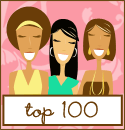Top Five Ingredients for Moisture & More Teri Evans | June 9th, 2008
It is the thirstiest of textures. Natural curls and kinks always crave mega doses of moisture. And there are many ingredients in curl-centric products that gladly answer that call. Flip over bottles of your favorite curl concoctions and chances are you’ll see the same key ingredients time and time again. But what makes them unique for curly girls? Here is a roundup of the top five ingredients that pack the best moisture-filled punch — and a whole lot more.
Shea ButterWhat it does: Tames and clumps curls, reduces frizz.
Works best for: Dry, thick textures; 3B curl types and up. Fine hair? Stay away or find a product where it’s found lower on the ingredient list.
Why curlies love it: “Shea butter is heavy, dense and rich. It is a great emollient and has slight sunscreen properties.” — Stacey Canfield, founder of Blended Beauty, a hair care line for multiracial curlies
“It makes the hair really soft. If your hair is chemically processed, it’s really good for that, too, because it’s so moisturizing.” — Jessica McGuinty, founder of Jessicurl, a hair care line for curlies.
“It’s very rich and is always best when mixed in a conditioner. Even with the kinkiest thickest hair, though I wouldn’t put straight shea butter on the hair.” — Marsha Coulton, founder of Curl Junkie.
Vegetable GlycerinWhat it does: Defines and separates curls, reduces frizz.
Works best for: All curl types. Thick textures should look for glycerin high up in the ingredient list.
Why curlies love it: “It’s a humectant so it attracts moisture from the atmosphere and puts it into your hair.” — Jessica McGuinty, Jessicurl
“It’s highly effective to help encourage the curl and, used in the right amount, it can help cut frizz. So if you’re in a humid environment, it draws moisture into the hair. But it’s tricky when you’re in a dry climate and use a product with a lot of glycerin. You may find it drying because it will take moisture from your hair, if there’s none in the air.” — Marsha Coulton, Curl Junkie
Jojoba extract
What it does: Heals dry or damaged hair, enhances shine. Helps define and clump curls.
Works best for: All curl types, especially thick textures.
Why curlies love it: “It’s the oil that most closely mimics the body’s natural oils so it’s great to use as a natural shine enhancer along the ends of curls, especially for those curlies avoiding cones like the plague.” – Nico Aceves, Bumble & Bumble stylist
“Since it resembles the lipids in the skin, it can help dissolve skin lipids to unclog pores. Clogged hair follicles slow down hair growth so this [ingredient] is nice to have in a scalp oil.” — Stacey Canfield, Blended Beauty
Avocado oil What it does: Restores moisture to dry or damaged hair, enhances shine.
Works best for: Thirsty curls of all types.
Why curlies love it: “It contains denser lipids and several vitamins… it’s mostly used to enrich products with proteins and vitamins that other oils do not have.” — Stacey Canfield, Blended Beauty.
“It’s very nourishing and enhances the shine in hair. Even though it’s a light oil, it’s very nourishing and it’s okay to use whether your curly hair is thick or wavy and thin.” — Wendi Levy, co-founder of Mixed Chicks, a product line for multiracial curlies
“Fine hair should specifically look for this ingredient because it’s a lighter oil. It doesn’t provide the same dramatic clumping effect like jojoba does, but it improves the health of the hair, adds shine and bounce to the curls. If I had a deep treatment that would be an oil I would include.” — Marsha Coulton, founder of Curl Junkie
Aloe Vera What it does: Protects hair from heat damage, smoothes hair, defines curls.
Works best for: All curl types, especially fine textures, due to its lighter weight.
Why curlies love it: “It’s lightly moisturizing with a low pH which helps seal the cuticle of the hair and that also encourages shine. It can help with detangling. Although, keep in mind, some people have sensitivities to aloe.” — Marsha Coulton, founder of Curl Junkie
“Aloe can be used to enrich the water content in a product, with vitamins B, C and carotene. It is also great for itchy scalps.” — Stacey Canfield, Blended Beauty
“I love to recommend aloe as a natural gel to impart hold without the dreaded crispy effect.” — Nico Aceves, Bumble & Bumble stylist















.png)













.png)


































